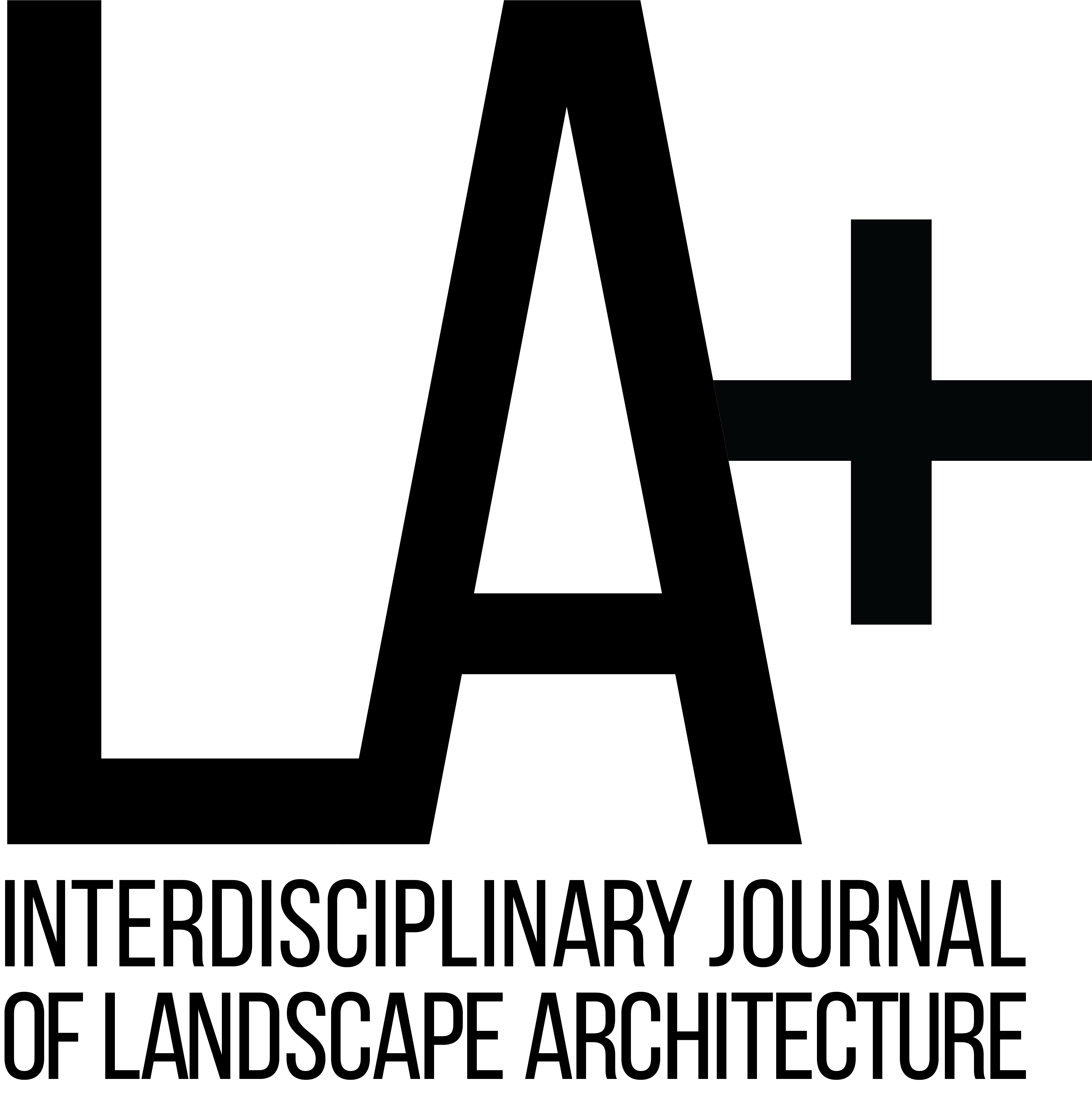
HONORABLE MENTIONS
The following 10 designs from Bangladesh, Canada, China, Germany, Hong Kong SAR, United States, and New Zealand were awarded honorable mentions by the LA+ EXOTIQUE jury. These designs will be published in the Spring 2024 issue of LA+ Journal, along with interviews with each of the jury members and a selection of notable designs making up a compelling and diverse Salon des Refusés.
CHUANQI LIU + MUYUN XIAO + WENJIA ZHANG (CHINA)
The Black Axis
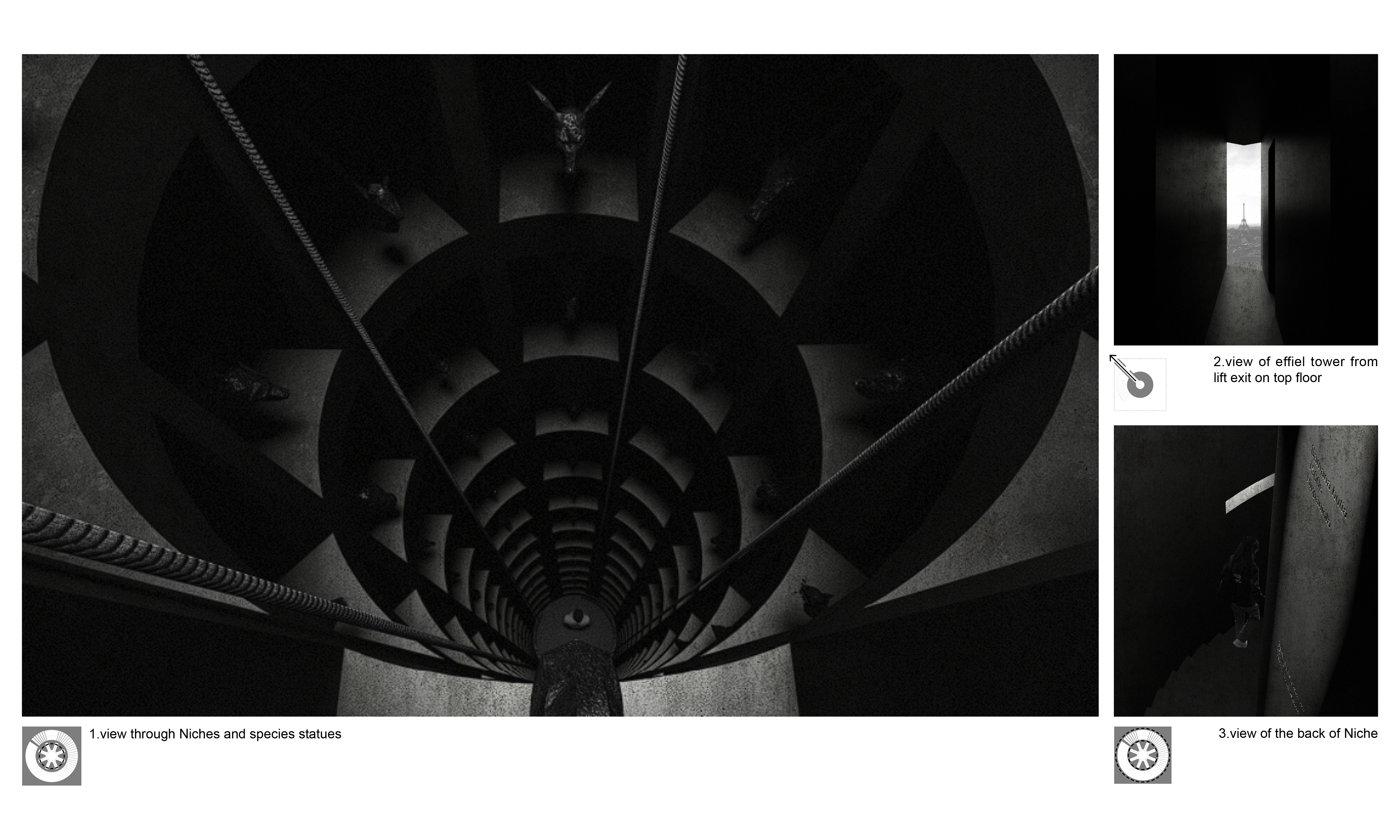

The Black Axis is a 50-meter tall concrete tower placed in front of the Muséum National d’Histoire Naturelle. Its central core displays statues of species that have gone extinct throughout the Anthropocene. As one ascends the tower, the human, usually the observer, is surrounded by the gaze of the non-human creatures.
YANG FEI + XINYI ZHOU (CHINA)
A Field of the Ordinary


Set against a backdrop rich in exotic collections and colonial treasures, A Field of the Ordinary is a serene intervention juxtaposing an assembly of 260 trees native to France with wound-like concrete planks, fostering a contemplative space of healing and mutual understanding amidst colonial grandeur.
JULIA TREICHEL (GERMANY)
The Foreign Inside of Us


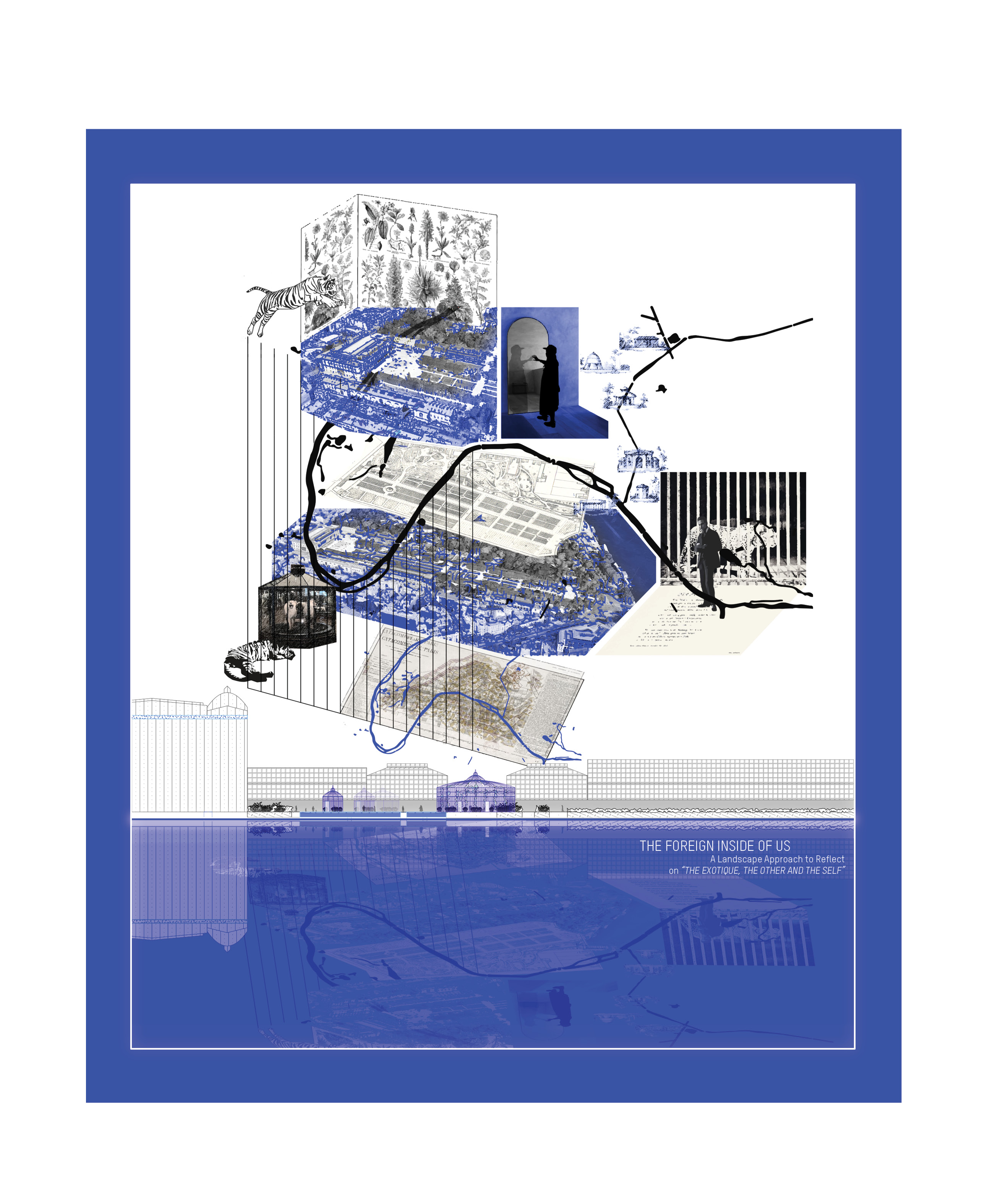
A large water surface serves as an oversized landscape mirror and becomes a reflection of the surroundings and the visitors. Narrow paths that cross the reflecting pool and lead to platforms with planted, “caged” pavilions further serve as elements whereby visitors themselves become the objects of the exhibition.
FARZIN BAIK (UNITED STATES)
Ginkgonomy

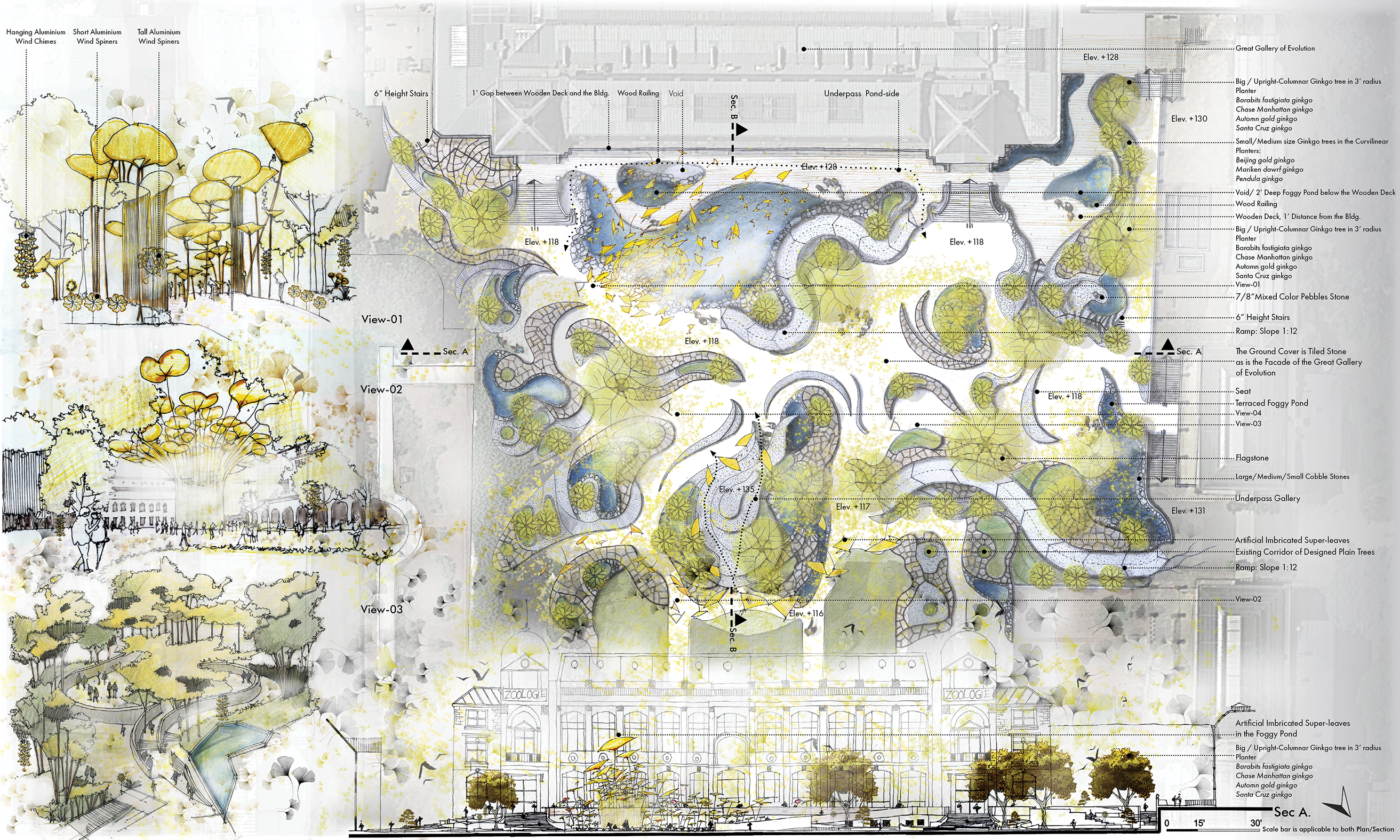
Ginkgo biloba challenges traditional taxonomic boundaries. Ginkonomy is meant to disrupt the museum’s grand forecourt—a symbolic gateway to the world of taxonomy—by showcasing exceptions to taxonomic rules, emphasizing the dynamic nature of evolution, and creating sensory immersion through dense plantings of many ginkgo cultivars.
MAURA MCDANIEL + ISAIAH SCHAREN (UNITED STATES)
Garden of Extinction 
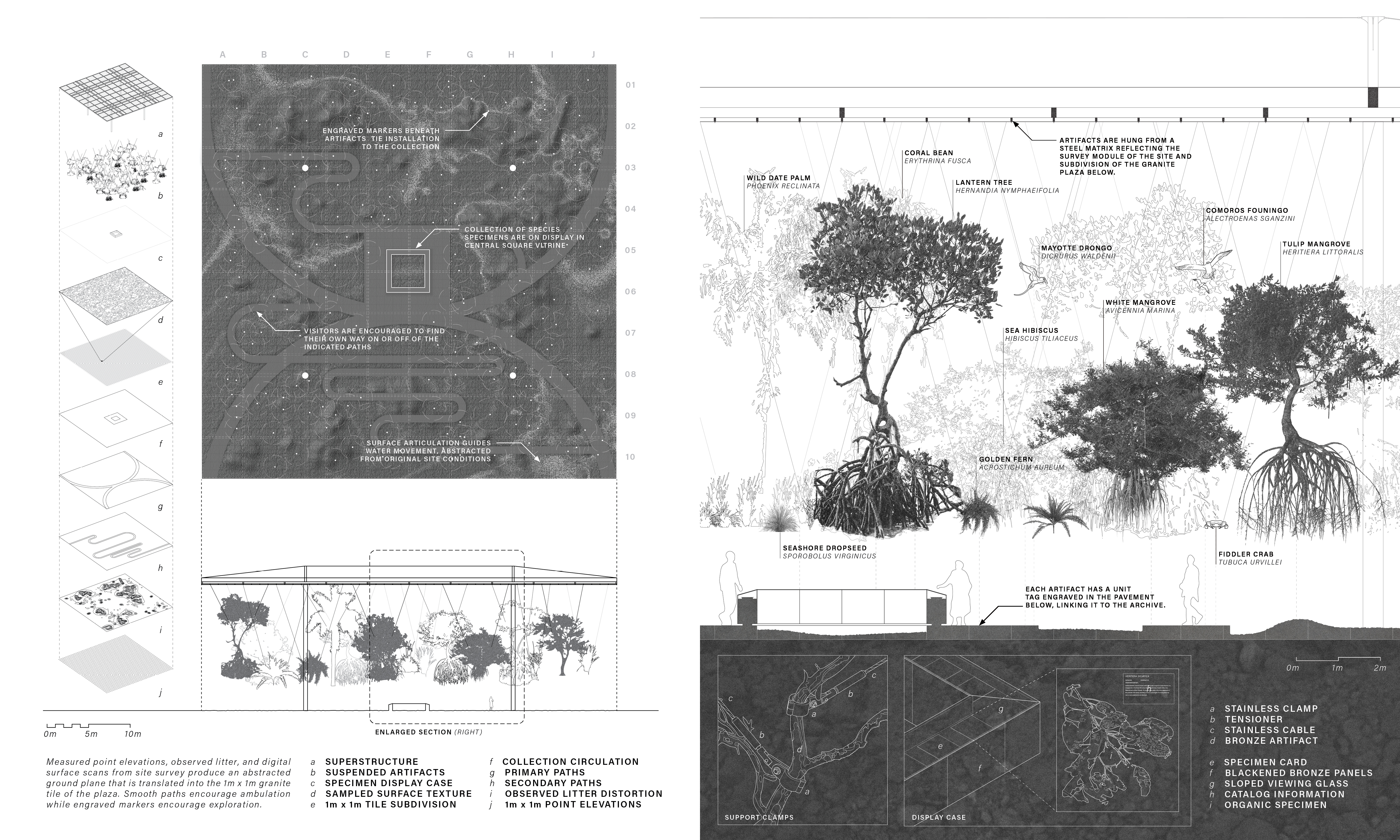
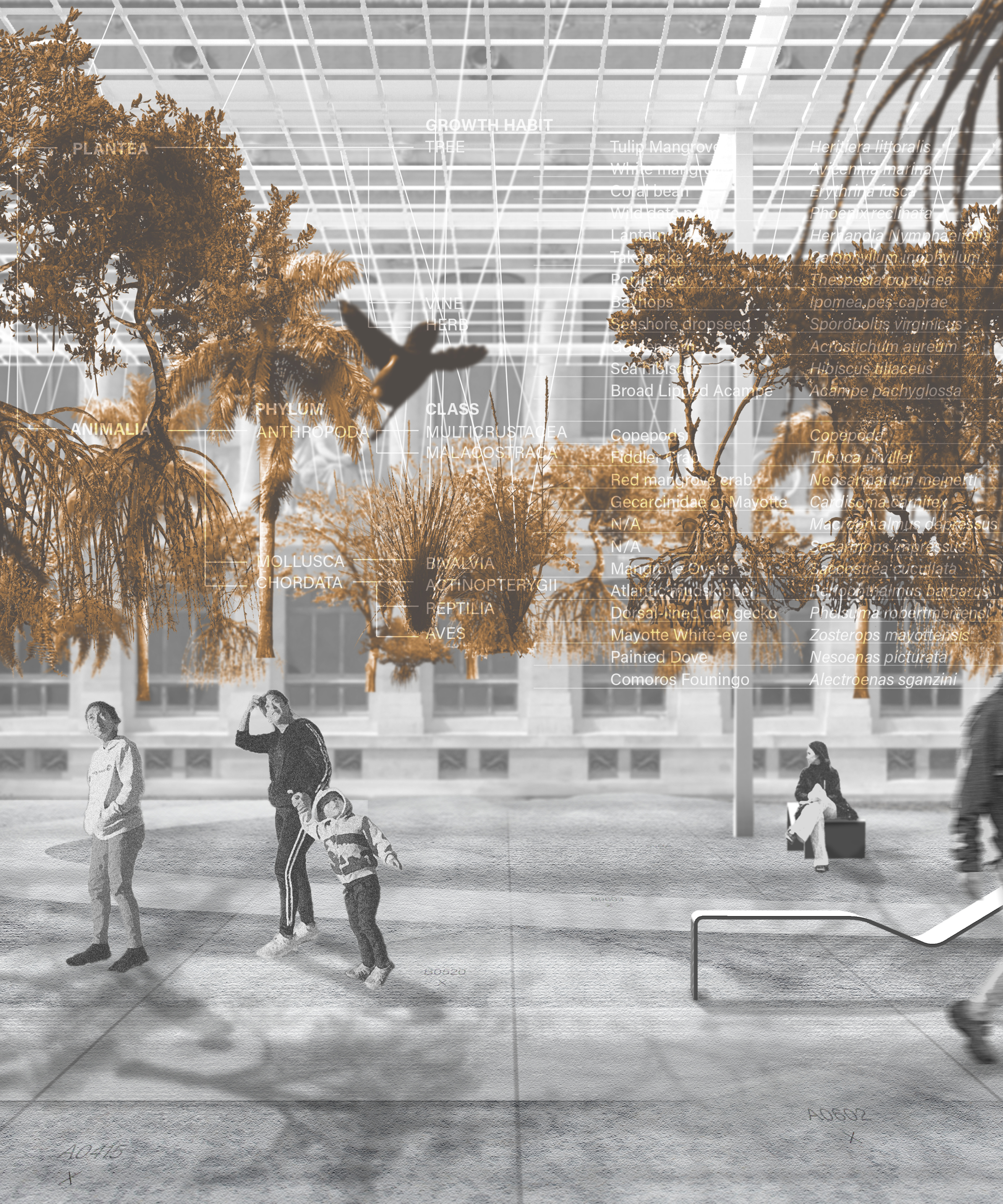
This proposal is to relocate a 50 m by 50 m area of back mangrove from Mayotte to the forecourt of the Museum of Natural History in Paris. It is a reflection on a deep internal conflict between the desire to see and know the world and a profound sadness that, in the not-so-distant future, the only opportunity to do so may be through hollow artifacts of the world we lost.
DANIEL COOMBES (NEW ZEALAND)
The Declassifying Forecourt
![]()
![]()
![]()
The Declassifying Forecourt accommodates 6,000 cubic meters of soil, aligning with the six million specimens in the Gallery of Botany’s herbarium. The design strategy stems from a simple equation: one liter of soil for each specimen within the collection. As the soil is placed in the forecourt, it is configured by soil taxonomy; however, the uneven quantities suggest geographic and colonial influences.



The Declassifying Forecourt accommodates 6,000 cubic meters of soil, aligning with the six million specimens in the Gallery of Botany’s herbarium. The design strategy stems from a simple equation: one liter of soil for each specimen within the collection. As the soil is placed in the forecourt, it is configured by soil taxonomy; however, the uneven quantities suggest geographic and colonial influences.
LOUISE BANI SARCAR (BANGLADESH)
Allée of Darkness
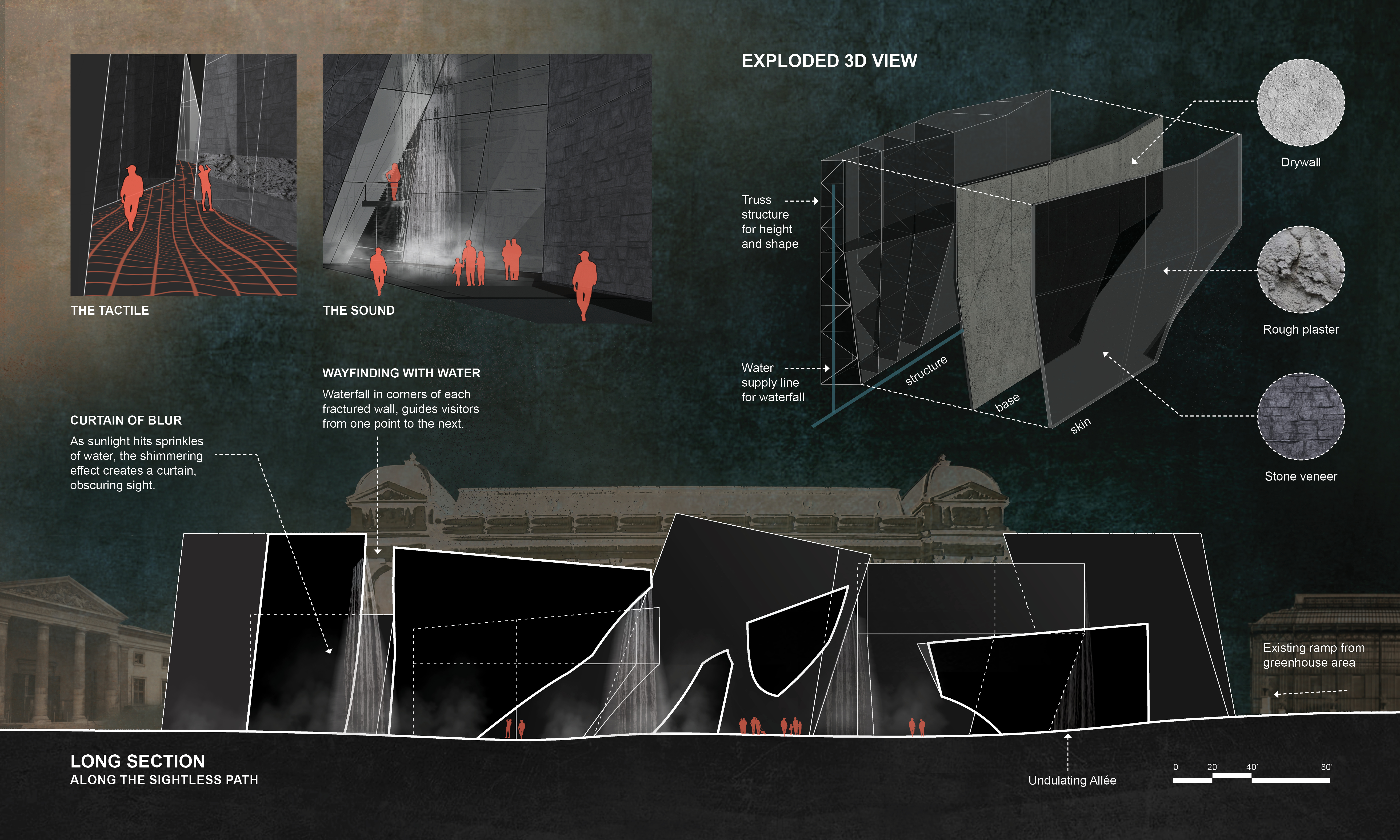

We explore what we want to see; what we explore is what we conquer, and once we conquer, we exploit. This design critiques the human desire to control nature and the yearning to establish command over territory by proposing an allée flanked with massive walls to block this gaze of power, taking visitors on a sightless journey, enveloped in darkness.
WAI LO CIARA (HONG KONG SAR)
Intangible Archipelago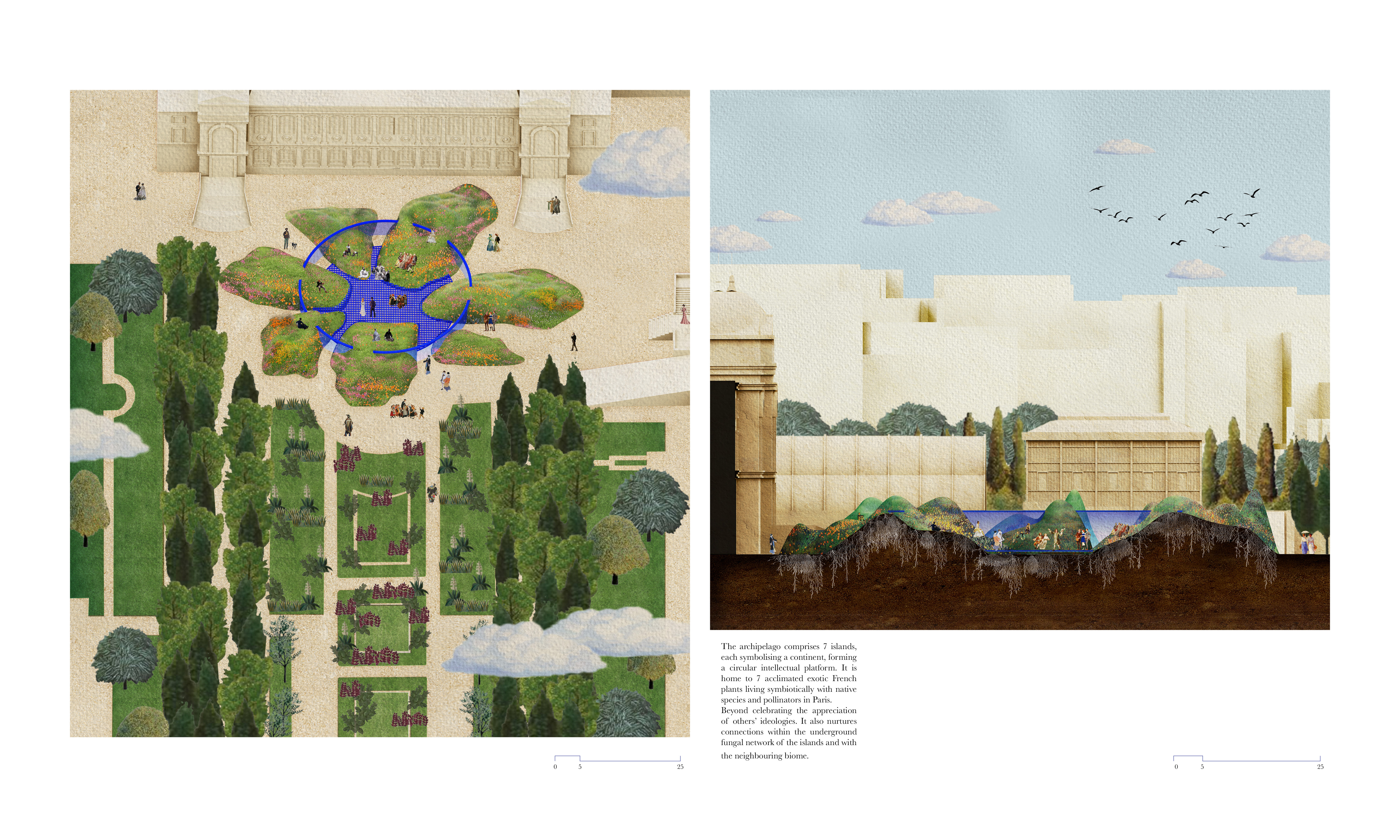


CLAIRE NAPAWAN + LINDA CHAMORRO + MARC MILLER (UNITED STATES)
de | colonize


This proposal utilizes participatory action to disperse plant seeds, providing a contrast to the surrounding manicured gardens and the “precious” specimens within the museum collection. The exotic becomes not the specimen itself but the way the garden form is determined, representing a new relationship with the natural world that allows for the “messy” and its continual evolution.
DALE WIEBE + RYAN COATES (CANADA)
Exploration Grounds

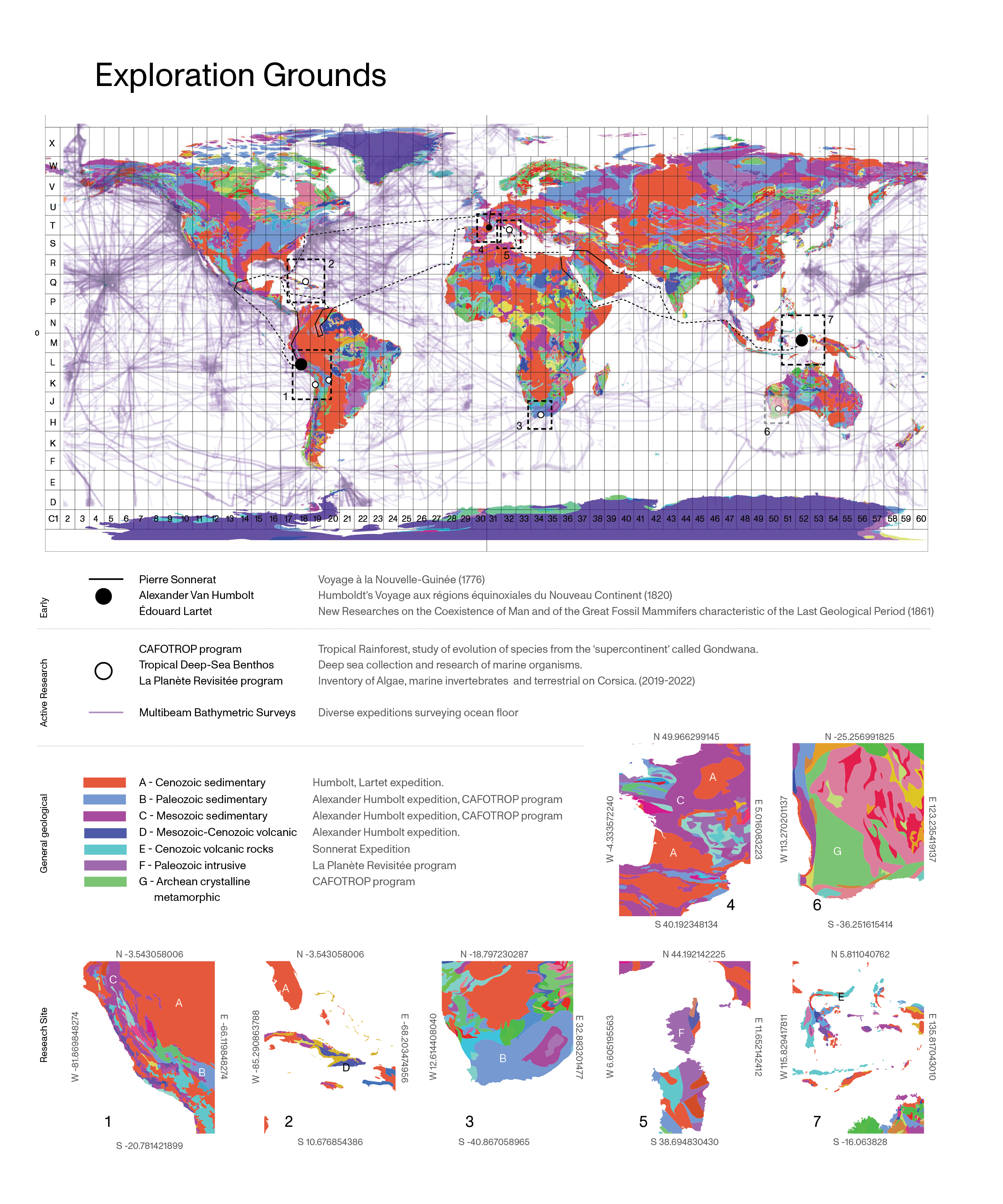
The collection of living matter archived in the Museum of Natural History are representations of distant landscapes. Our proposal pays homage to the grounds left behind – it translates the geological grounds of research sites from the past into a unified sloping surface that connects the museum entrance to the botanical garden. Variations of geologic texture encourage the deposition of organic matter and the spontaneous seeding of a new landscape.
